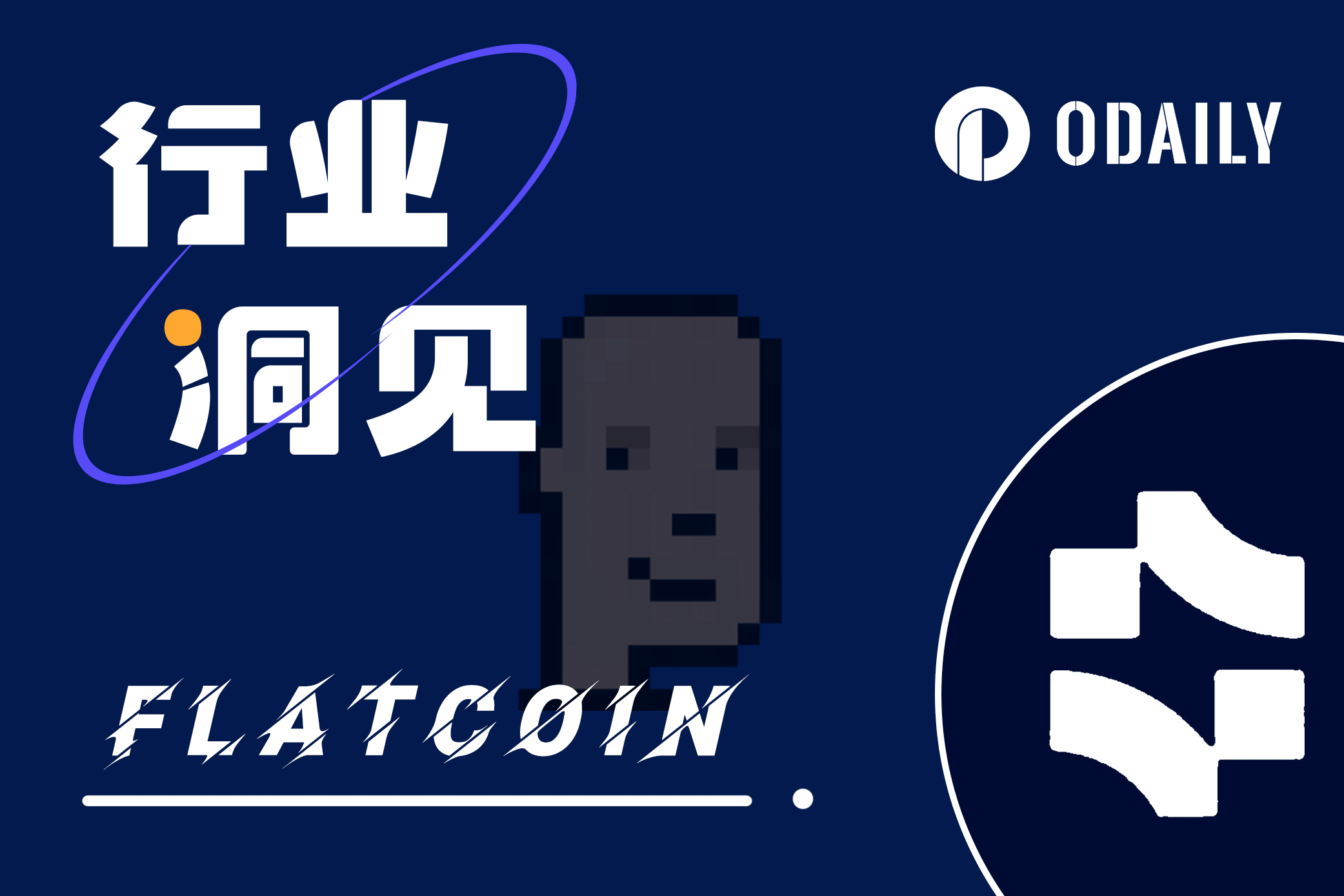让Coinbase心心念念的Flatcoin会是稳定币的下一形态吗?
原创 | Odaily星球日报
作者 | 0xAyA

这已经不是 Brian Armstrong 第一次提起 Flatcoin 概念了——就在前两天,他接受了 Yahoo 财经的专访,谈到 Flatcoin,他表示“这是稳定币的下一个迭代,更可能与 CPI 或购买力有关。”
而上个月底,Brian Armstrong 在推特上发文公布自己看好的十个加密赛道,Flatcoin 赫然排在首位,此前 Base 基金会公布了其生态基金支持的四大方向,Flatcoin 依然是第一个被提到的概念。
到底什么是 Flatcoin?这个赛道蕴含了怎样的前景?有做出产品的项目了没?这一概念离现实有多远的距离?Odaily星球日报将在下文中一一展开。
Flatcoin 的概念
如果说传统的 Stablecoin 是直观地和美元等法币 1: 1 锚定,那么 Flatcoin 就是和抽象的“生活成本”进行锚定,以一种更“务实”的方式来维持价格的稳定性。
Flatcoin 的目标是对抗通胀,确保持有者的价值不会因为法定货币的通胀而贬值。为了实现这一目标,Flatcoin 基于不同的数据(如 CPI 或生活成本指数)优化其价格的平稳性,以确保持有者的购买力能够与生活成本的变化相匹配。
举个例子来说,假设一个 Flatcoin 项目将其货币与一篮子商品进行锚定,商品包括食品、能源、房屋和交通等基本生活必需品。当这些商品的价格发生变化时,Flatcoin 的价格也会相应地调整,以保持与生活成本的稳定关系。如果篮子中的商品总体价格上涨,Flatcoin 的价格也会相应上涨,以抵消通货膨胀的影响。
通过与生活成本进行锚定,Flatcoin 提供了一种更为综合和抗通胀的方式来维持价格的稳定性,这种方法可以帮助持有者在经济变动和通货膨胀的环境中保护其财富的价值。
Coinbase 为何痴迷 Flatcoin?
Coinbase 在 Mirror 文章中是这么介绍 Flatcoin 的:“我们对去中心化稳定币设计中所展现的深思熟虑感到着迷,特别是对‘Flatcoins’(即跟踪通胀率的稳定币)非常感兴趣。这种稳定币使用户在购买力方面具有稳定性,同时也能在传统金融体系引发经济不确定性时具备韧性。我们也欢迎其他形式的‘Flatcoins’,它们不以法定货币为锚定,而是填补了法定货币锚定币和波动性加密资产之间的空白。鉴于全球银行系统最近面临的挑战,我们相信这些探索比以往任何时候都更加重要。”
“我很确定‘Flatcoin’这个词最初是由 Balaji(原 Coinbase CTO)在他和我之间的私人对话中诞生的,最初的构想后来演变成了$FPI。重点是,‘与生活水平持平’本身就很有用,而不是一个任意的参考标准,因此 Flatcoin 是美元的合法继承者。”Frax 创始人 Sam Kazemian 在推特表示。
而 Balaji 本人已经数次在推特发表过有关 Flatcoin 的言论,同时在另一篇长推中引用了这个概念用于说明固定价格在多大程度上隐藏了波动性:“Flatcoin 是较新的概念。如果法定货币本身开始通胀,那么它就不再是真正的‘稳定’。因此,Flatcoin 优化的目标是与链上商品篮子相比保持价格的稳定。”
尽管 Balaji 已经离开了 Coinbase,但 Coinbase 仍然贯彻着对于 Flatcoin 的认可,早在年初,Base 生态基金公布支持的四大方向中就有 Flatcoin 的身影,最近公布的首批六项投资项目中的 Truflation 也将成为 Nuon 等 Flatcoin 项目的数据喂价机。Brian Armstrong 也在最近的专访中谈及团队正在研究 Flatcoin,并表示虽然 Coinbase 还没有踏足该领域,但对此“很感兴趣”。
头部项目——Nuon Finance
Flatcoin 赛道目前还处于蓝海市场,其中比较代表性的项目是 Nuon Finance——其号称自己为“世界上第一个真正的去中心化 Flacoin”,目前的每日通货膨胀水平由 Truflation 进行喂价,Truflation 每天更新并跟踪整个经济的价格数据,使用来自 30 多个数据源和 1000 多万个数据点的数据。
Nuon Flatcoin 的价格与价格为 1 美元的一篮子商品的当前价值软挂钩,一篮子商品包括广泛的实际实物商品以及被认为在现代社会不可或缺的服务,包括食品、日用品、文娱、烟酒、服装、住房、交通、公用事业、健康、通信、教育等类别,每个类别分为多个子类别,并包括多个数据源。而 Nuon 协议本身使用过度抵押和套利来维持挂钩,同时抵消 Nuon Flatcoin 持有者的通货膨胀。
协议在设计上给用户留下了四种参与其中的方式:铸造者抵押加密资产并铸造 Flatcoin;买家可以购买 Flatcoin;套利者在出现价差时搬砖以获得收益,同时抹平价差;治理代币 Holder 可以进行提案等治理行为,并赚取一部分协议费用。
而 Nuon 协议通过独特的三重冗余机制,从而保持锚定稳定性:协议本身激励用户进行 Nuon 的铸币或销毁操作;过度抵押保护协议;套利加速重新锚定过程。
Nuon 的动态清算比率系统负责将 Nuon 的价格维持在尽可能接近目标锚定价。动态清算比率的波动考虑了通胀率、Nuon 锚定偏离以及抵押品波动,使其成为 Nuon 协议的核心算法。
其次,无论价格如何波动,所有铸造的 NUON 都需要在协议上进行过度抵押。这确保了铸造的 NUON 的实际价值不会波动。
最后,套利者也加速了锚定的恢复。他们通过市场上的供求关系自然而然地被激励这样做,就像其他所有加密货币一样。Nuon 还通过清算比率的变化所产生的买卖压力人为地激励套利者。
尾声
通过其独特的算法和机制,Flatcoin 在实现价格锚定和抵御市场波动的同时,给稳定币赛道提供了一条新的选择,而就在全球通货膨胀形式不容乐观的今天,以法币尤其是美元作为锚定的传统稳定币也面临着不小的风险——IMF(国际货币基金组织)在今年 1 月发布的世界经济展望中这样写道:
全球通胀率预计将从 2022 年的 8.8% 降至 2023 年的 6.6% 和 2024 年的 4.3% ,但仍高于疫情之前(2017-2019 年)约 3.5% 的水平。印、中两国将占到今年全球经济增长的半壁江山,相比之下,美国和欧元区的增长总和仅为全球增长的十分之一。我们预计,今年全球通胀将下降,但即使到 2024 年,超过 80% 国家的年均总体通胀和核心通胀仍将高于疫情前的水平。
Coinbase 对于 Flatcoin 的期待能否在未来真正实现并大规模推广?它和传统稳定币之间的关系是势如水火还是互帮互补?它最终会成为下一个最热门的 DeFi 叙事吗?这些问题仍需要时间来给出答案。



